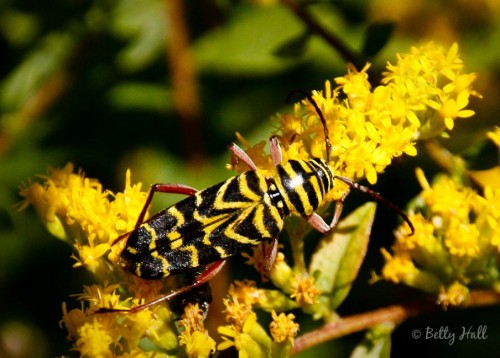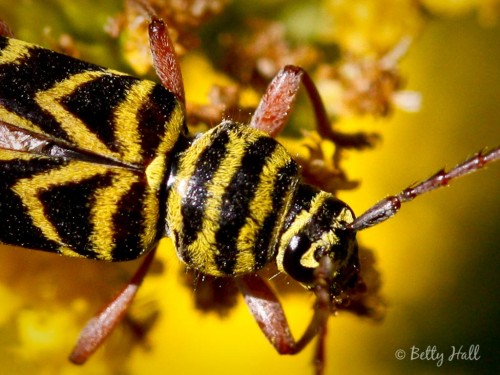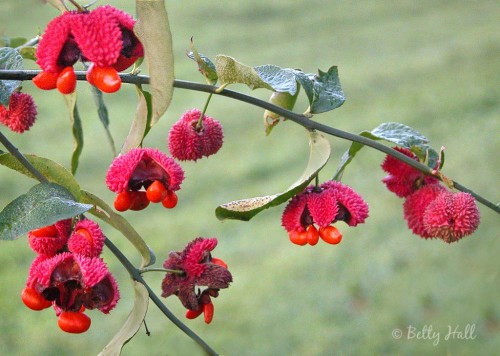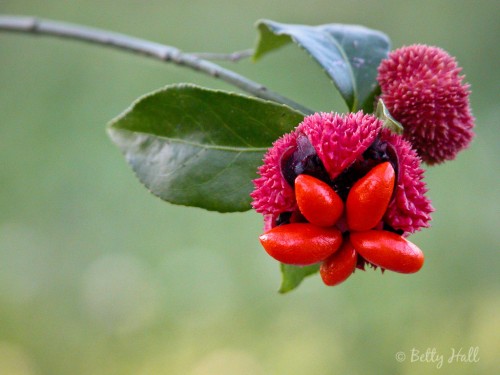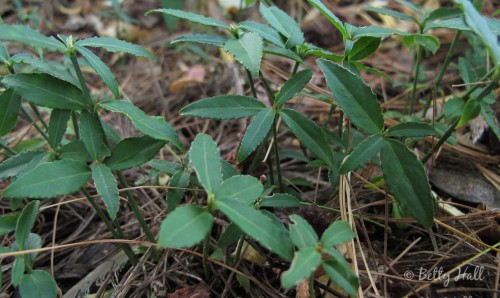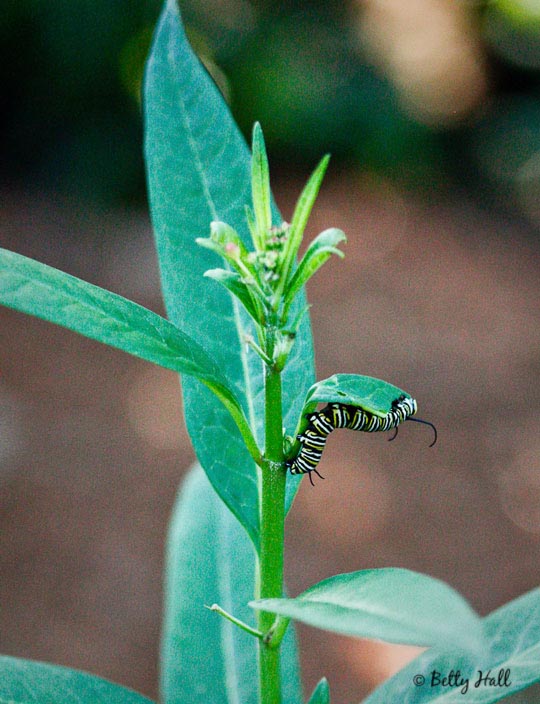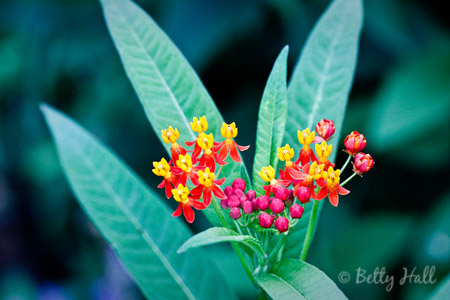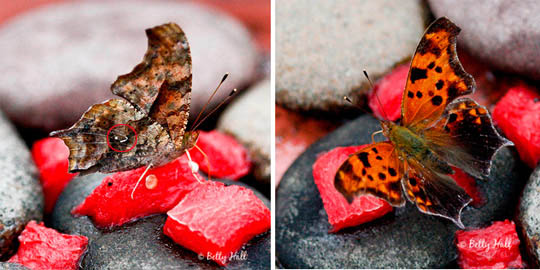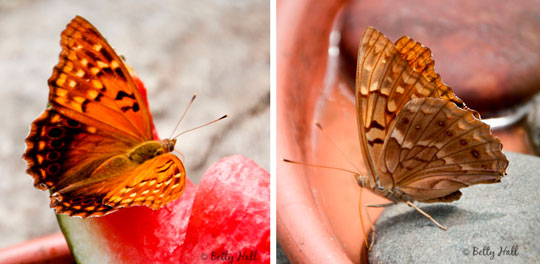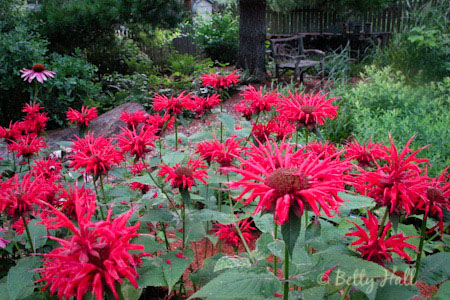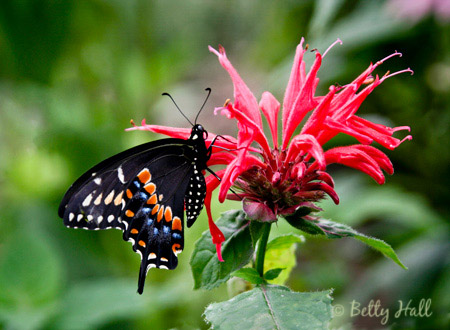The Rough-leaved Goldenrod (Solidago rugosa) has been the most popular plant in the backyard recently. The airy, arching stems with yellow blossoms have been a gathering place for a myriad of insects including bees, flies, wasps, and unknowns, all busily feeding on nectar and gathering pollen.
This is one of the insects that got my attention (click images for larger versions).
I checked BugGuide and discovered it’s a Black Locust Borer (Megacyllene robiniae). Adults feed on pollen, particularly from goldenrods. The larvae live on Black Locust trees and can be a pest.
When I cropped an image to get this close-up, I was surprised to see that the body was somewhat fuzzy.
I enjoyed observing all the comings and goings on this goldenrod plant, and I’ve decided watching insects is great fun. There were far too many interesting creatures for one blog and I’ll share more images later.

